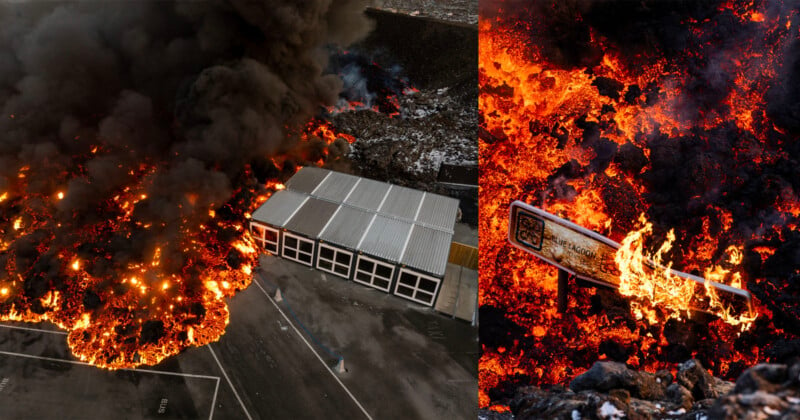
A photographer has shared a series of dramatic photos showing volcanic lava engulfing areas around the Blue Lagoon in Iceland after the Sundhnúka crater erupted.
Press photographer Vilhelm Gunnarsson tells PetaPixel that he has covered every volcanic eruption in Iceland bar one since the year 2000.
“All these eruptions have happened about 30 minutes from my home so I am usually very fast when the police issue warnings it is going to erupt,” explains Gunnarsson. “The area is closed to the public but press is allowed to get closer if we have a gas mask, gas meter, helmet, and Tetra radio, plus a special press card.”
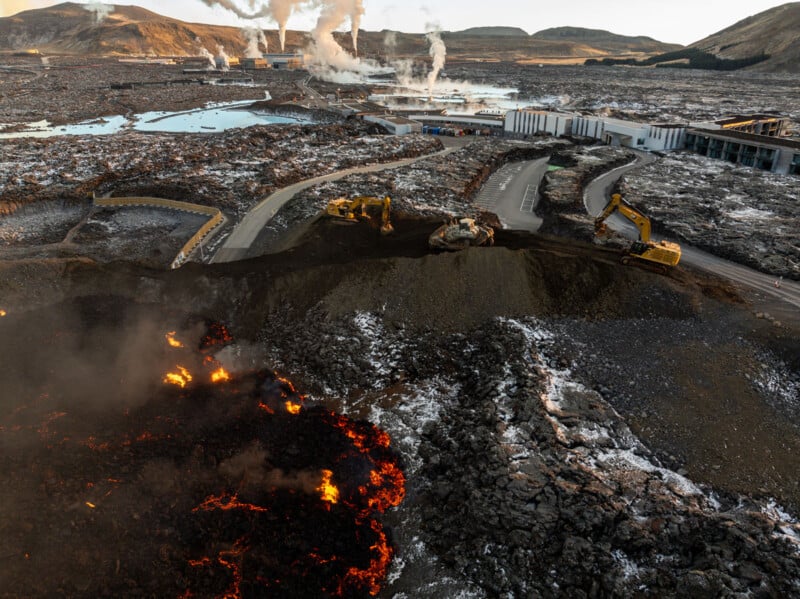

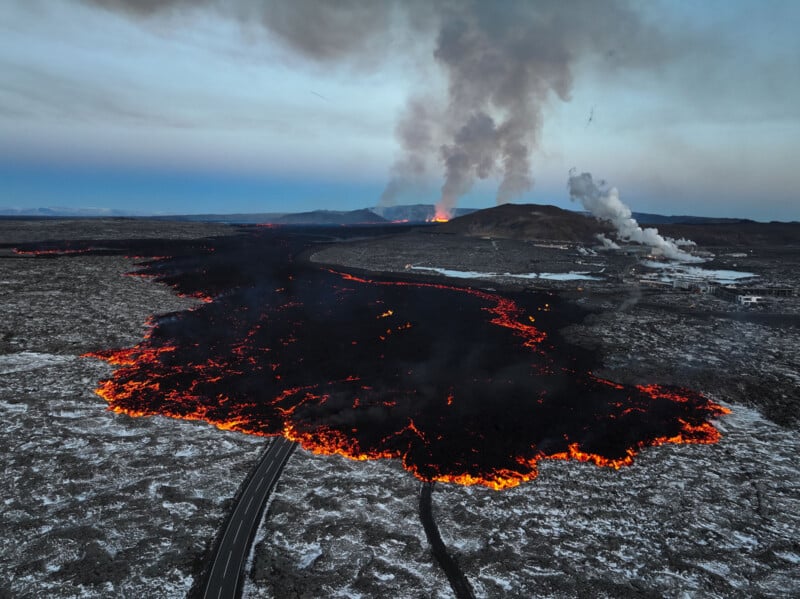
The eruption that started last Wednesday night began with the opening of a three-kilometer (1.9 miles) long fissure. The Sundhnúkur crater is close to Iceland’s internationally renowned tourist attraction the Blue Lagoon, a geothermal spa.
The Blue Lagoon was forced to close as the resort’s parking lot was engulfed in lava last week. 50 homes in the homes of Grindavík, which lies at the center of the seismic activity, were forced to evacuate.
![]()
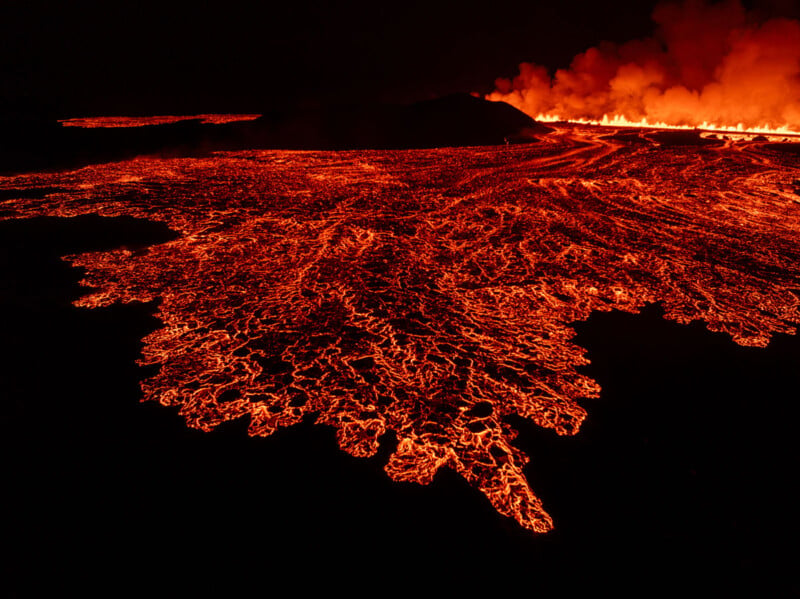
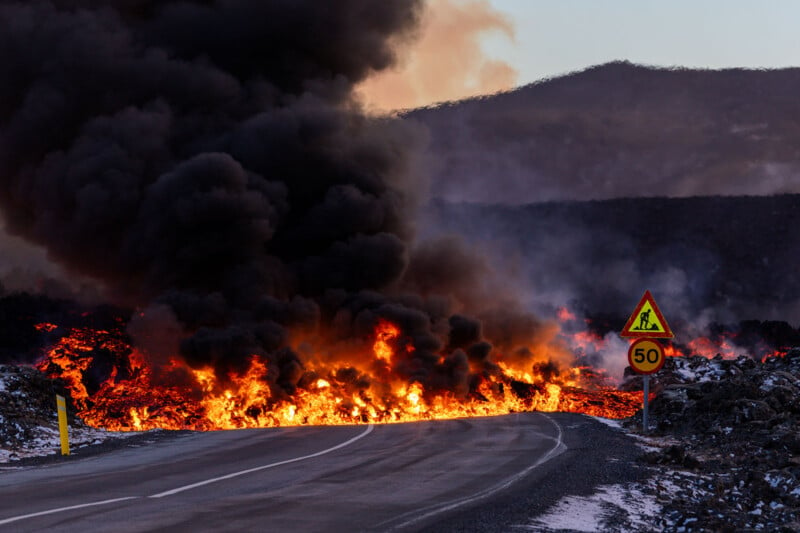
“Lava has previously destroyed roads, homes, power lines, and water pipelines,” Gunnarsson explains.
“Since December 2023, there have been seven eruptions in the area of Sundhnúksgígar. The eruptions have increasingly tested mitigation measures, such as lava cooling, employed to protect Svartsengi power facilities.”
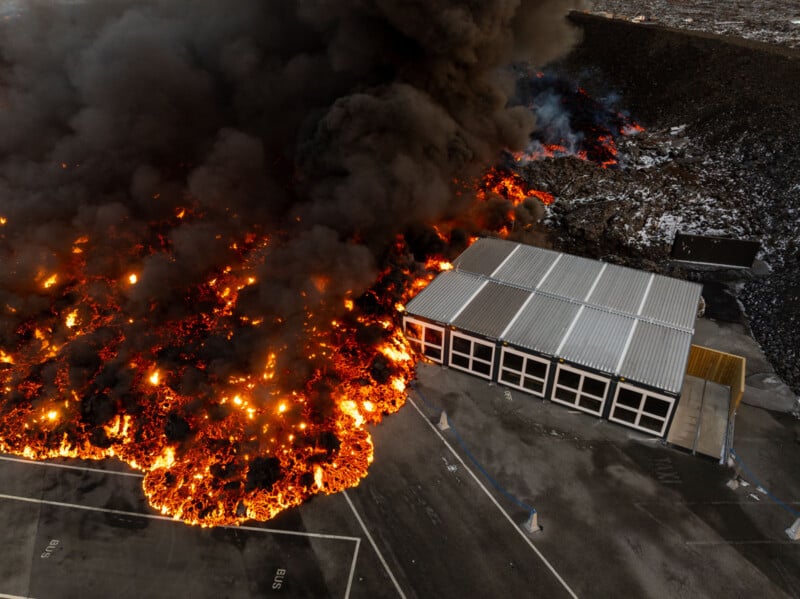
![]()
![]()
Gunnarsson adds that residents and authorities have become adept at handling eruptions, quickly organizing evacuations, and implementing measures like rerouting communications when fiber cables are damaged.
There have been ten volcanic eruptions on the Reykjanes Peninsula since the region entered a new volcanic phase in March 2021. Seven of those eruptions have been in 2024 alone.
The longest eruption occurred at Fagradalsfjall lasting 183 days from March to September 2021. Eruptions near Sundhnúksgígar have generally been shorter. The one from last week is now reported as being stable.
“It can be assumed that most of the lava is now flowing to the east,” says Iceland Meteorological Agency’s nature watch. “Although it is not excluded that some lava may flow under the solidified surface to the west, although no movement was seen last night on that part of the lava bed.”
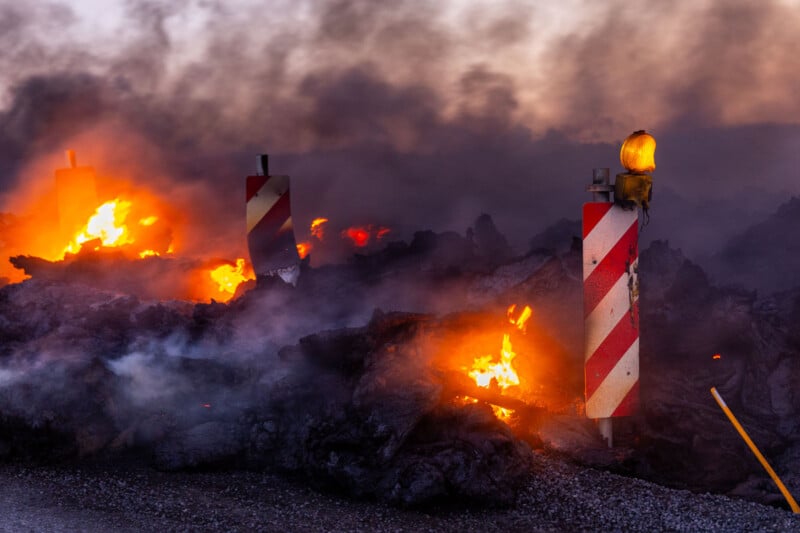
![]()
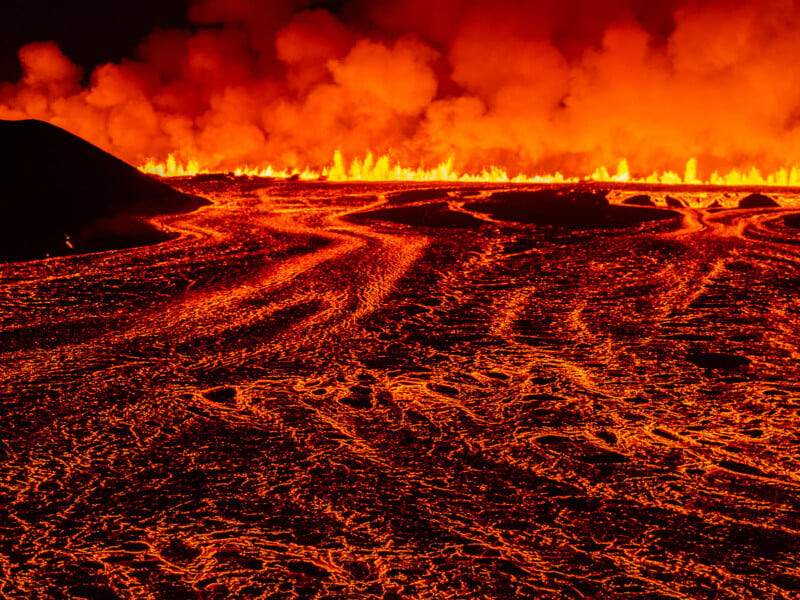
![]()
Gunnarson is one of the most experienced news photographers in Iceland and is currently working for www.visir.is. To see more of his work, head to his Instagram account.
Image credits: Photographs by Vilhelm Gunnarsson
